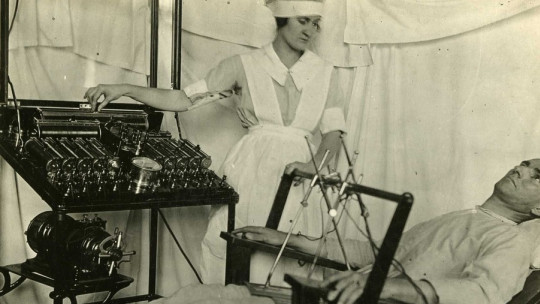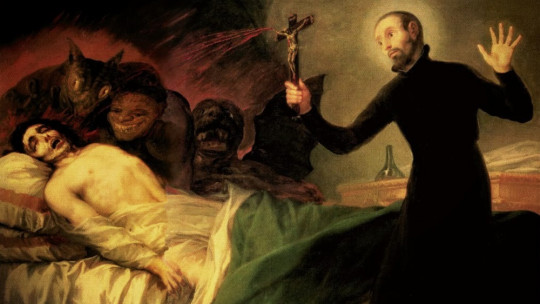
The conception of homosexuality as a moral or biological problem has existed in many societies throughout history. Christianity in particular has exerted a great influence in this regard in European and American countries.
During the 20th century, the developments of psychological therapy were used to modify the behavior and alleviate the discomfort of people with a wide variety of “disorders.” These included what some experts still call “egodystonic homosexuality,” which was supposed to be cured by reorienting sexual drives.
Although “anti-gay therapy” was born mired in discredit and it has never abandoned it, to this day it continues to be practiced surrounded by controversy.
What is “anti-gay therapy”?
Sexual conversion therapy is a pseudoscientific practice, that is, it misleadingly claims that its approaches are based on research. Many studies have reported the lack of effectiveness of this form of behavior modificationto the point that there is no longer a real debate about it in the scientific community.
The poor results of reorientation therapy are probably due to the fact that its objective is not limited only to modifying behaviors or behavioral habits but also impulses with a biological origin, which are difficult to modify.
While the most common forms of “anti-gay therapy” today focus on conversation and visualization, it has also been used more controversial techniques such as aversive therapy, electroshock and even lobotomy.
The most common thing is that homosexual people who agree to undergo this type of “treatment” do so for moral reasons, because they see themselves as sick or abnormal and to avoid the social rejection they receive from their environment.
The most prominent proponents of sexual conversion therapy are Christian fundamentalist groups who seek to get others to adhere to behaviors they consider ethical, especially members of their religious community.
History of conversion therapy
In 1935 Sigmund Freud answered a letter from a woman who asked him to treat her homosexual son by denying that this orientation was an illness and that it could be “cured.” According to Freud, all children are bisexual and develop their definitive sexual orientation during adolescence depending on whether they identify with the mother or the father.
However, the popularization of behavior modification starting in the 1960s promoted the appearance of treatments that would become known as sexual reorientation or conversion therapy. Psychiatrists and psychologists such as Edmund Bergler, Samuel Hadden, Irving Bieber, Joseph Nicolosi, and Charles Socarides advocated the effectiveness of behavioral techniques in converting homosexuals to heterosexuals.
The scientific literature clearly discredited conversion therapy and stated that increased risk of isolation, anxiety, depression and suicide. Likewise, social activism managed to stop homosexuality from being considered a disorder in the second edition of the Diagnostic and Statistical Manual of Mental Disorders (DSM-II), which appeared in 1968.
However, in the International Classification of Diseases (ICD-10) the diagnosis “Egodystonic sexual orientation” is still valid, which is applied to people who feel discomfort due to their sexuality, and many people are still practiced. forms of “anti-gay therapy” that deny the evidence provided by researchespecially in religious settings or with the aim of obtaining economic benefit.
Homosexuality as paraphilia
Reorientation therapy for homosexuality bears close similarities to those carried out in paraphilias. This term currently encompasses the focusing of sexual impulses on animals, objects or behaviors that involve non-consenting people.
So, paraphilic disorders include pedophilia, zoophilia, exhibitionismvoyeurism or frotteurism, in addition to other sexual preferences that can cause discomfort in the person who feels them or in others, as can happen with sadism.
This discomfort is one of the main criteria that continues to be used today to justify conversion therapy in cases of homosexuality. The problem is that emotional problems do not derive directly from the fact of being attracted to people of the same sex, but from the negative social conception that may exist in this regard.
The way in which the ICD describes “egodystonic sexual orientation” is closer to the so-called “gender identity disorders”, still current in the DSM. In both cases the diagnostic category itself has a pathologizing effect and moralizing since it separates discomfort due to sexuality or identity from other causes, promoting the person’s adaptation to specific social norms and removing responsibility from the environment.
So to speak, diagnosing egodystonic homosexuality or a gender identity disorder would be similar to doing the same with victims of bullying or gender violence, emphasizing whether the person is a child or a woman.
How was homosexuality “cured”?
Conversion therapy does not follow official guidelines because it is not recognized by associations of psychologists and doctors. None of these treatments have been shown to be effective and most are in disuse.
We recommend that those who are interested in learning more about sexual reorientation therapy watch the television series Masters of Sexwhere some of these treatments and the vision of homosexuality in general are portrayed in the context of the birth of sex therapy, in the United States of the 50s and 60s.
1. Aversive therapy
This type of therapy consisted of presenting a punishment together with the stimulus that was intended to stop being attractive; In the case of homosexuality, erotic images with people of the same sex were used.
Punishment, usually nauseating substances or electrical currents, was supposed to make that homosexual images would stop causing excitement. In reality, aversive therapy only managed to increase the feelings of guilt and fear of the people who underwent it.
2. Psychotherapy
In the past, some psychoanalytic theorists proposed that homosexuality It was due to unconscious conflicts originated in childhood and could be “cured” by resolving these conflicts through psychotherapy.
Currently, “anti-gay therapy” is carried out primarily through dialogue, at least when it is practiced openly. Some psychological professionals and religious organizations practice a type of counseling focused on convincing the person to repress their homosexual impulses.
3. Masturbatory reconditioning
This technique is commonly used in the treatment of paraphilias. It consists of masturbating using arousing stimuli that are considered inappropriate (in the case of conversion therapy, homosexual images) but when reaching orgasm visualize the stimuli that are intended to be made more palatable (people of the opposite sex).
Following the principles of conditioning, heterosexual images should become palatable with repeated practice, and newly developed attraction to the opposite sex could replace homosexual impulses. Masturbatory reconditioning has not been shown to be effective as conversion therapy.
4. Electroconvulsive therapy
Electroconvulsive therapy involves transmitting low-intensity electrical currents to the brain of an anesthetized person to alter brain chemistry in cases where other forms of treatment are ineffective.
Although if practiced correctly it can be effective in treating some resistant cases of depression**, mania and schizophrenia**, not only does it not “cure” homosexuality but at the time when conversion therapy was in vogue, electroshock more frequently produced side effects such as memory loss and broken bones.
5. Medical treatments
This category includes some of the most aggressive therapies that have been applied to “cure” homosexuality. For example, in the middle of the last century it was not uncommon for lobotomies, that is, surgical incisions in the brain, to be performed; Homosexuality was related to the action of the hypothalamus, specifically.
They have also been applied estrogen treatments and even chemical castration to reduce the libido of homosexual people.








